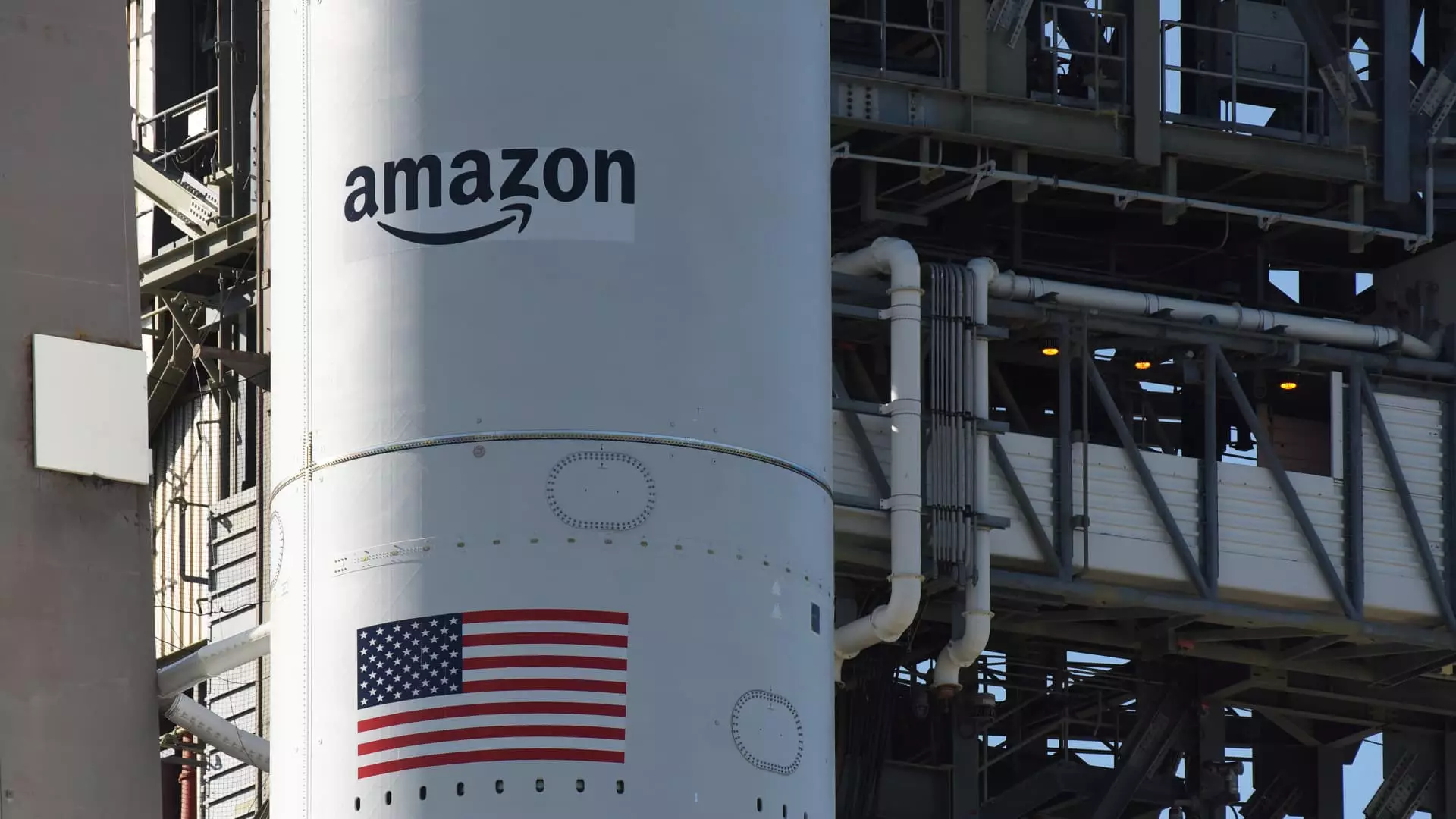Amazon’s ambitious project to deliver global internet access through its Kuiper satellite constellation was momentarily stymied by inclement weather conditions. Scheduled for liftoff from Cape Canaveral, the United Launch Alliance (ULA) rocket, loaded with 27 Kuiper satellites, faced unavoidable delays due to “stubborn cumulus clouds” and inclement winds. This setback serves as a stark reminder of the unpredictable nature of space launches; even the most meticulously planned endeavors can be thwarted by natural elements. ULA’s decision to halt countdown operations underscores the rigorous safety measures employed in the aerospace industry. It’s an important point of reflection—while technological advancements can smooth many paths, we remain profoundly at the mercy of Mother Nature.
Amazon’s Vision for Connectivity
Since announcing its plans six years ago, Amazon has demonstrated a serious commitment to establishing itself in the competitive satellite internet landscape. The goal is straightforward yet monumental: to provide high-speed, low-latency internet to a wide array of users, from individual consumers to large corporations and government entities. Unlike traditional internet infrastructures, Amazon’s square-shaped terminals aim to connect users to a network of satellites orbiting lower Earth, revolutionizing access, especially in remote areas often neglected by conventional service providers. Such aspirations are commendable, yet they come with significant hurdles and time constraints that dictate a sense of urgency.
A Race Against SpaceX’s Starlink
In the high-stakes arena of satellite internet, Amazon contends with SpaceX’s highly successful Starlink service, which has already deployed around 8,000 satellites. The competition isn’t merely about technology—it’s a race against time and regulatory milestones. The company faces a looming deadline imposed by the Federal Communications Commission (FCC), which mandates that at least 1,618 of its planned satellites need to be operational by July 2026. The pressure is palpable; delays, like the weather-induced delay this week, can profoundly affect Amazon’s timeline and strategic goals. The stakes are high, and every misstep could translate into lost market share and diminished credibility.
Pivotal Shifts in Corporate Strategy
As the battle for satellite supremacy intensifies, the implications of corporate governance and strategic alignment emerge. Notably, Elon Musk’s growing influences within governmental circles highlight the intertwining of corporate ambitions and political leverage. With Musk’s appointment as an advisor overseeing government efficiency, the relationship between SpaceX and federal agencies is becoming increasingly significant. This juxtaposition offers a glimpse into the complex landscape where public policy can amplify or inhibit corporate endeavors, especially in innovative domains like space exploration and internet accessibility.
Looking Ahead: Amazon’s Next Steps
Despite this recent setback, Amazon’s trajectory remains promising. The company has signaled intentions to ramp up production and deployment rates following the eventual launch of its satellite fleet. Preparation efforts for future missions are already underway, emphasizing Amazon’s determination to break through the barriers set by adverse weather and competitive pressures. This ongoing commitment to innovation positions Amazon as a formidable contender in the quest for expanded global connectivity, a goal that holds vast implications for economies and communities around the world.
In an age where reliable internet access is paramount, Amazon’s challenges and aspirations signal not just a commercial venture, but a transformative initiative with potential ramifications for billions.


Leave a Reply